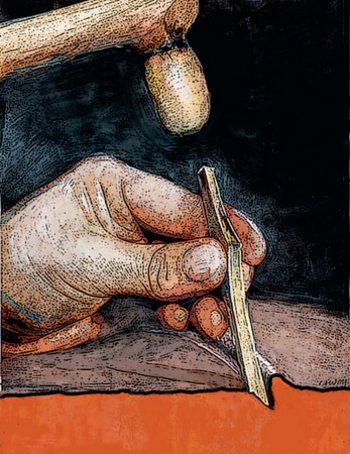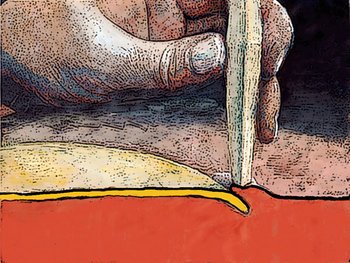From Copper Ore to Celestial Image
Everything indicates that the Sky Disc and the other objects from the hoard were made in central Europe. The copper used in the alloy of all the objects comes from one deposit, presumably in the eastern Alps. There, several copper mines existed around 1600 BC, the largest of which was the Mitterberg.
Manufacturing Technology
We know of large quantities of bronze finds from the 3rd and 2nd millennium BC in Europe, but only very little evidence of the casting and forging craft. At the beginning of the Bronze Age only a few small clay nozzles, such as those found in Sachsenburg, have survived in central Germany, but neither furnace remains nor casting moulds or tools like hammer and anvil.
Inserting coloured precious metal sheets or wires into different base metals is called inlaying. At the time the Nebra Sky Disc was made, the inlay technique in the eastern Mediterranean region was already highly developed and applied with great skill. However, neither the objects of the Mediterranean world nor their decorations can be reasonably compared with the few known west and central European inlays of the Early and Middle Bronze Age.
The gold sheets on the Sky Disc were only attached at their edges. With tools made of hard bronze, grooves were cut into the disc, the gold sheets were placed in them and then clamped in place by hammering the bronze edge flat.
Here you can find the film from the »Museum exklusiv« series of the State Museum of Prehistory »Die Himmelsscheibe von Nebra: Materialuntersuchungen« (German version only).

